John Hurrell – 26 March, 2019
Apple is irked by the presence of a fully operating shower in Mokopōpaki's Brown Room, clearly a functioning gallery space. His set of two ‘paintings' (one square printed-on canvas an enlarged detail of the other tall skinny vertical work) prods the visitor into imagining the room devoid of the plumbing fixtures (taps, nozzle, tray, plughole etc) and glass screens, and with more floor and wall space.
The two ‘Gallery Abstracts’ presented here are in the schematic tradition Apple has been working in for some years now, using floorplans to examine (on canvas) inconsistent proportional (or directional) architectural relationships or built in community processes like wastewater channelling systems. In some ways these differ from the others, they being a form of his censuring mode as seen in his 1979 tour that promoted the idea of The Given as an Art Political Statement, where Apple provided a critique (using the colour red) and expected the gallery owner to fix ‘the problem.’
He also has such expectations here, for even though Mokopōpaki commissioned this project and blue is the dominant hue, Apple is (as always) a straight talker and his canvases show it. He obviously is irked by the presence of a fully operating shower in Mokopōpaki’s Brown Room, clearly a functioning gallery. His set of two ‘paintings’ (one square printed-on canvas an enlarged detail of the other tall skinny vertical work) prods the visitor into imagining the room devoid of the plumbing fixtures (taps, nozzle, tray, plughole etc) and glass screens, and with more wall and floor space. The circular drainage form on the smaller canvas (set against a field of azure blue) alludes to Johns, Noland, Dashper, O’Neill and Gober, all of which have used similar motifs. Gober, of course, has constructed and installed plugholes.
Apple’s two ‘abstracts’ are presented in two adjacent rooms with brown and grey wall colours, different tones, different political inflections. As this artist’s ‘architectural’ images go, these geometric diagrammatic renderings are surprisingly uncomplicated. The large work could have been made by Gordon Walters or John McLaughlin.
Apple also has a history of producing artworks that feature sound (usually the aural components involve cars or motorcycles, and sometimes musically scored compositions that use chance) and so on opening night at Mokopōpaki the shower was running, creating an ambient backdrop for the gallery chatter.
If the shower were to be removed from the gallery (as Apple hopes), and its pieces of plumbing sold by one of his dealers as reinstallable art residue accompanying the two abstracts, and turned on after being reinstalled by a plumber, the resulting softly ‘pitter pattering’ aural work could be then presented with the canvases on a nearby (institutional?) wall.
This show has a different emphasis from the two earlier Apple exhibitions at Mokopōpaki, being less about language or politics and more about architectural purpose and friendship—its nature as a double-sided sword.
John Hurrell
Recent Comments
John Hurrell
Here is the latest Billy Apple work, locating the precise centre of Aotearoa New Zealand. https://www.newshub.co.nz/home/new-zealand/2019/04/researchers-discover-the-exact-centre-of-new-zealand.html


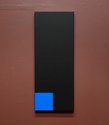
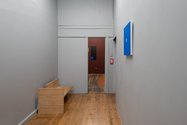

 Advertising in this column
Advertising in this column Two Rooms presents a program of residencies and projects
Two Rooms presents a program of residencies and projects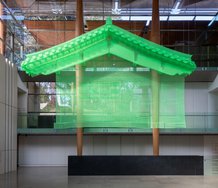
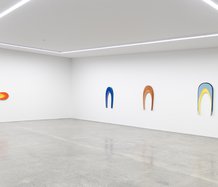
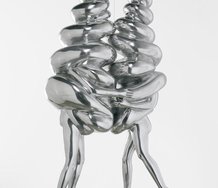

This Discussion has 1 comment.
Comment
John Hurrell, 8:45 p.m. 18 April, 2019 #
Here is the latest Billy Apple work, locating the precise centre of Aotearoa New Zealand. https://www.newshub.co.nz/home/new-zealand/2019/04/researchers-discover-the-exact-centre-of-new-zealand.html
Participate
Register to Participate.
Sign in
Sign in to an existing account.